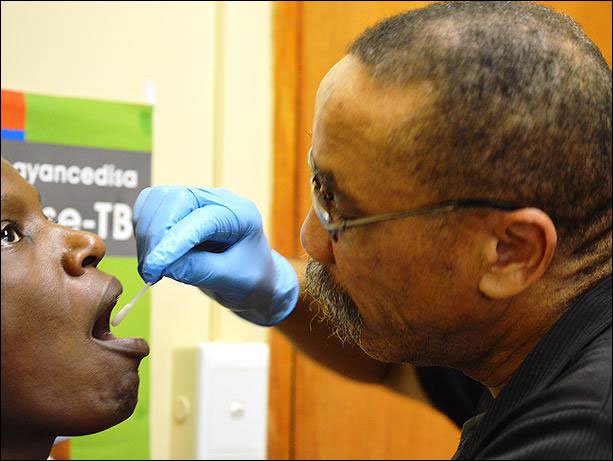Oral swabs show potential in TB detection
Click Here to Manage Email Alerts
Use of oral swab specimens successfully identified up to 90% of confirmed tuberculosis cases, offering a viable alternative to sputum samples, according to the results of a small, proof-of-concept study.
“Care and control of the disease TB really requires prompt case-finding,” Gerard A. Cangelosi, PhD, professor of environmental and occupational health sciences and global health at the University of Washington, said in a press release. Detecting TB using oral swabs, he said, “could be a game changer for TB control because it could make diagnosis cheaper and easier.”

Gerard A. Cangelosi
Conventional TB detection using sputum samples presents challenges because bacteria derived from the airways of patients with active TB disease can be difficult to collect and analyze, and a patient’s cough places health care workers at risk for infection. Most alternatives to sputum — including blood, saliva and urine samples, as well as exhaled breath concentrate — have documented sensitivities below 40% in comparison, according to the researchers.
Cangelosi and colleagues at the University of Cape Town collected three swabs each from 20 patients with active pulmonary TB in a clinic in South Africa, and from 20 healthy control patients. The samples were tested for Mycobacterium tuberculosis by laboratory-based PCR.

Figure 1. A medical staffer in Cape Town, South Africa, collects a patient's swab sample.
Source: Kevin Vollenhoven
Results indicated that 18 of the patients with confirmed TB yielded at least two positive swabs, and healthy controls were 100% negative.
According to the researchers, bacilli frequently pass from the lungs through a patient’s mouth — it is possible that a portion of bacilli bind to buccal cells, which could allow clinicians to detect with some accuracy the presence of M. tuberculosis in oral mucosa. Although the study included only adult patients, this approach to TB testing could also prove beneficial in children, who often have difficulty producing positive sputum.
“The results of this small, proof-of-concept study suggest that oral swabs can be used to test for TB, which is normally diagnosed by sputum analysis,” Cangelosi told Infectious Disease News. “If validated in larger studies, oral swabs could enable faster, easier and more active TB case-finding strategies.” – by John Schoen
Disclosure: Cangelosi reports no relevant financial disclosures.
